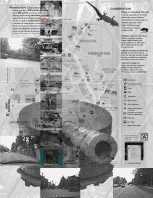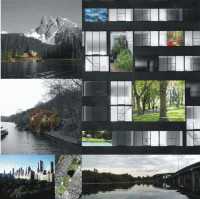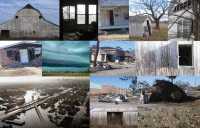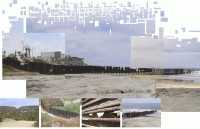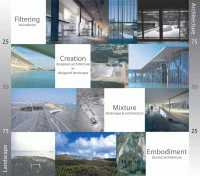Silvia Cheng
there is no business to be done on a dead planet.
conservationist david bower
bachelard discusses “a first myth of outside and inside,” the distinction of the two leading to an inherent angst – a right and wrong imbedded in the existence of a dichotomy. how does that dichotomy – its aggression and exclusivity – effect the built world? in reference specifically to the built “landscape” it separates interest of design and experience to what has historically been thought of as inside and outside realms. in reality, those realms are interwoven…the same fabric made up of distinct threads. how can we start to define those threads? a possible investigation to find the definitions begins with a zoo in an urban setting. how do the two worlds live together. is there really a difference between the wild of the street and the wild of the zoo. who is being protected – the animal or the people. what is being conserved. what is actually wild. anything? what is tame. what is of the street. what is of the park. does a boundary actually exist. how is it defined. by a fence. or a movement of conservation. the distinction between two worlds is dangerous in that it supposes they are different. in fact, they inhabit the same space and are the same.
Particularly, Landscape architecture is the art, planning, design, management, preservation and rehabilitation of the land and the design of man-made constructs. The scope of the profession not only includes natural environmental design but also is related to urban planning, architectural design, and historic preservation. My intention with this photomontage project was to discuss the different roles among nature, architecture and city. Permanently, “nature’ and ‘city’ consider being two opposite words. Both of them can not coexist and repel each other. With the development of human civilization, nature is no longer pure and primitive. Nature is interfered by people. From the left-top photo, it presents the relationship between architecture and landscape. The nature is a background and the building is principal part. However, because of the natural instincts, people are unable to break away form natural life. How to bring the nature into the city to offer better quality of the life is highly developed issue. Take Central Park for example, the designer attempt to create a place which includes the dense forest and various species to make people have the feeling of seeming to get back to nature. In architecture, there is the similar concept. Designers
modularize the space. They attempt to turn trees, gardens, and parks into units and bring them into buildings. The building becomes a background and the more attractive sight of building is the nature. Therefore, about the relationship between city and nature, since the mankind is also a part of nature, people should respect the nature more in development of city. How to create the environments which the nature and artificiality coexist in harmoniously is the important issue in the future.Air meets water. Water meets land. Land meets air. These unions vary in abruptness. Air has an imperceptible nature unless it is speckled with clouds or becomes intelligible through water’s waves or land’s trembling trees. Water is planar unless affected by air, the rise of a fish, or the fall of a bird. Land undulates, slices, or unfolds against the imperceptible air and dives abruptly into the water, often tripping the water disturbing its planar serenity. The intersection of man with this otherwise untouched scene is pronounced in air by plane or tower, in water by boat or dock, and in land by car or foundation. From the depths of space, air, water, and land appear undisturbed playing only with each other on a lonely sphere. From the horizon they come alive in human interaction. This interaction defines what can be called the landscape: a massaging of the elements to create place, to create a means of journey. The trembling of trees and the waves of the water are now coupled with boats’ billowing sails. Land becomes bridged and water’s power usurped. Air becomes encased and its buoyancy defied. The landscape blends and the pureness of union between the elements becomes assuaged.
Architecture will always be placed into some sort of landscape whether it is a field or a busy city. Sometimes there is an integral relationship. Sometimes the landscape is shaped to interact with the built form. Sometimes the built form is shaped to interact with the landscape. Maybe there is a green roof. Maybe there is a vine that grows on the side of the building. Maybe the form is pushed into a hill. How does this relationship grow and change over the long term; beyond the growth of vines and flowers? What happens to architecture that disregards the landscape? What happens when the landscape takes over the architecture?
In the beginning there is this static relationship between the land and building but over time this becomes dynamic. The old, uninhabited house begins to erode and the tree comes in. The grass grows into the unused barn. The city is irreversibly changed from the flooding of a constructed landscape. How can this dynamic relationship be taken into account in the initial design of architecture? Should buildings be permanent or do they become temporal and take into account erosion patterns and natural forces? Can the boundaries between building and landscapes become blurred allowing for this change to enhance the quality of the architecture?at the tijuana/san diego border retains an unyielding, migrating mass of central and south americans. six million use the official san ysidro checkpoint annually, but this doesn’t account for thousands, vital to the u.s. workforce economy, who cross this landscape quietly everyday.
the fallacy of the american dream might persist in a policy-maker’s rhetoric, but surely not in the litter-strewn seagrass of border field state park, where the physical border reaches the sea. the u.s. side of this zone is barren ground – a person standing is the tallest point in the landscape, with exception to a friendship monument that the border fence bisects. wide, groomed, sand paths assist border agents searching for terrorists crossing into the u.s. to wash dishes, change sheets, serve food. yet, this architecture provides a substandard level of security and will be supplemented by two taller fences and hundreds of floodlights paralleling the original rusted fence, creating a more distinctive scrape in the land and between two global neighbors. one fence, apparently, can’t accomplish what three fences might.
the tijuana side of the fence reads like a figure ground: variation in the size, shape and density of built form, open community spaces, and hierarchies of transportation trajectories. there is a bull-fighting ring near the friendship monument, hotels, beaches, and restaurants typical of a sea-side resort.
this delineated landscape, using the simplest of materials – earth, steel, and human persistence, resists an inevitable force.My intention of this photomontage is to show various integrated relationships between architecture and landscape.
The photomontage is consisted of four rows and each row exhibits different relationship. As the row goes down, architecture has less independence from landscape.
1. Landscape: Architecture=20:80
The first row shows how physical boundaries between architecture and landscape work on the relationship. Opening and architecture elements such as louvers filter landscape and create the space between architecture and landscape. For instance, these elements transform sunlight to shadow and make people aware of existence of the landscape elements.
2. Landscape: Architecture=30:70
The second row exhibits designed architecture in designed landscape. Though, landscape and architecture are designed to stimulate each other they are still independent here.
3. Landscape: Architecture=50:50
In the third row, we can see mixture of inside and outside in spatial composition and forms. Architecture and landscape are regarded equal in spatial composition and forms.
4. Landscape: Architecture=80:20
Architecture is embodied in landscape in the pictures of the fourth row. The figure-ground relationship is disappeared in this type of relationship.
Relationships between people and landscape are also different in those images. In the relationships of the first two rows, landscape is just for looking at. However, people are in the landscape and architecture in the images of the last two rows.
In the images of the third and the fourth row, the distinction of architecture and landscape does not exist any more.
